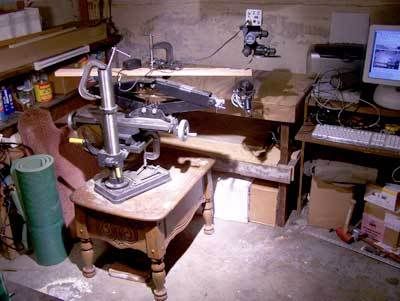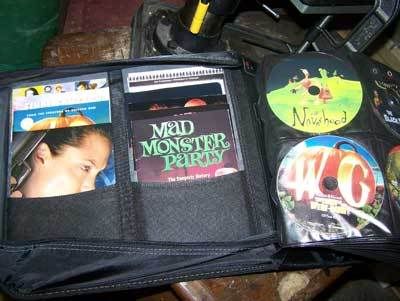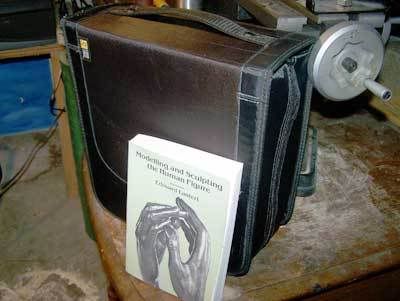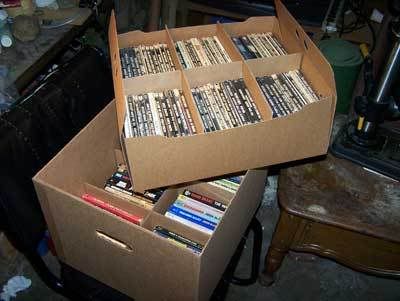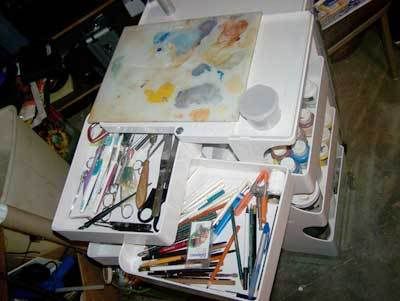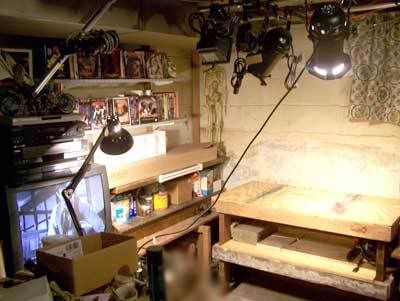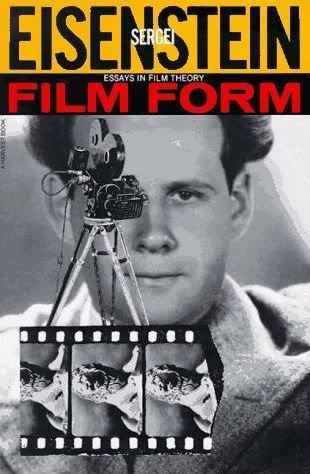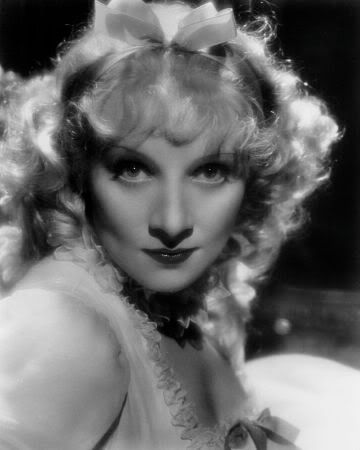
hangmen.mov 8.3MB (click image for movie clip)
I couldn't bring myself to edit all this great material down into one trailer for Scarlet Empress, so I decided to post several entire scenes that demonstrate von Sternberg's brilliance as a cinematographer (and set designer, costume designer, writer, director, editor, etc etc etc). A little ways below, I have some analysis of these clips, but first I grabbed the entire article by Donato Totaro from the
Offscreen website. I linked to it at the bottom of yesterday's blog, but in case you're one of those who don't follow the links - I'd recommend you first click each of the images and start all the clips downloading to your computer, and as they load read what Donato has to say. It will take a few minutes. Then you can dig in and feast your senses on the concentrated brilliance (and laugh at the shoddy dialogue). See ya in a bit then....
"Josef von Sternberg once said that he would not mind if his films were projected upside down, so much was his contempt for 'conventional' Hollywood storytelling. The Scarlet Empress, his sixth and penultimate teaming with his sinful alter ego Marlene Dietrich, is perhaps the most audaciously perverse film to have ever come out of a major Hollywood studio (Paramount in this case). One can surely find a stranger or weirder film in the bowels of marginalized film productions of the time (independent studios, one-shots, poverty row studios, etc.), but would be hard pressed to come up with a challenger from the top ranking studios. Granted that Paramount was always more willing than other studios to forego 'kulture' for the sake of idiosyncratic visions. As evidenced by the string of 'anarchistic' comedies they produced in the early thirties (W.C. Fields, the Marx Brothers, Mae West, Bob Hope and Bing Crosby, Wheeler and Woolsey). The Scarlet Empress, 'based' on the diaries of Catherine the Great, is Sternberg's version of 18th century Russia, much like his reconstructions of other far away exotic locations (Morocco, Shanghai, the Japanese island Anatahan, Macao). In other words, if you are looking for history with a capital H, look elsewhere. This is pure historical fantasy, with Sternberg's thematic obsessions (sex-as-power, sadism/masochism, reason vs. emotion) and painterly qualities holding rein over historical accuracy (although there are at least four innuendo references to horses that refer to Catherine the Great's apparent 'taste' for horses and her reputed death under the weight of a horse). The production may tell us that we are in 18th century Russia, but everything from Sternberg's mixing of art design styles (Byzantine, Rococo, Expressionist) to the fluctuations in acting style tell us otherwise. For example, some of the minor characters attempt to speak (albeit with American accents) in a pre-20th century argot, but Louise Dresser's snappy delivery as the tempestuous Empress Elizabeth is more fitting of a 1930's screwball comedy. In fact, the varying acting styles is one of the purest joys of this film. From Dietrich's wide-eyed innocence as the young Sophia, to her crazed gaze in the concluding shots, the heavy sexualized breathing patterns of Dietrich and Ruthelma Stevens as Countess Elizabeth, Sam Jaffe's over the top lunatic Peter the Grand Duke who, with his wide-eyed/mouthed expression and golden locks would not look out of place next to Chico and Groucho, and John Lodge's admirably wooden performance as Count Alexei.
Sternberg subtly projects on off-kilter world right from the beginning of the film. A close examination of the young Sophia's position in her bed, awkwardly twisted to face the family doctor and with a hand so awkwardly positioned underneath her head that it can not possibly be her own, is a visual indication of the bizarre 'Great Destiny' which awaits her. A destiny which even as a young child she envisions, when she not so innocently asks "What is a hangman...can I ever become a hangman?" and we are treated to a child's-eyed (we assume) montage view of the torturous travails of a court executioner. This striking montage includes lateral tracking shots of the executioner placing victims on a chopping block and then retreating in reverse as he decapitates them one by one, images of nude women burning at the stake, and being taken out of an Iron Curtain. The fleeting images we see of the nude women burning at the stakes, arms tied above their heads, sweating profusely, are as sexually charged as any image of the period. The imagery throughout this montage, which links sexuality to violence, foreshadows Catherine's eventual rise to the throne. As does the wonderful dissolve from the end of this montage, a huge close-up of a bell with a man as a human bell clapper, to the graphically matched image of Sophia's openly splayed dress as she plays on the swings. It is amazing to know that this scene (and the whole film) passed through the Production Code. Apparently the film was completed just prior to the enforcement of the Production Code (1933/34) and somehow managed to pass with their seal of approval.
Rather than the conventional linear cause and effect manner of telling a story, Sternberg advances the narrative through moments and scenes that echo and mirror each other, achieving a rhyming doubling effect. For example, soon after the film introduces Dietrich as the young Sophia, we see her prancing down the stairs to meet the Count Alexei, with the camera craning down to follow. This wide-eyed, child-like naivete is contrasted to the final scene, where Dietrich as the power hungry Catherine the Great rides a horse up the stairs to assume her position on the throne (and with her mad grin and jerky head movements takes on the physical characteristics of the Sam Jaffe's mad Grand Duke). Another key doubling effect comes in the two nearly identical bed chamber scenes. Catherine repeats moment by moment, gesture by gesture, the scene where the Empress Elizabeth tells her to blow out all the candles in her room and go through a secret passageway to tell the man in waiting he can enter her bedroom. The man of course is Count Alexei, the man Catherine has fallen in love with. The scene, filmed in stark, ominous shadows, becomes the defining moment for Catherine, where she loses any dreams of idealistic love she may have still harbored, and gleefully accepts her 'great destiny.' The moment, which Freud would call the 'primal scene,' is repeated with Catherine in the position of Elizabeth, and Count Alexei in her former role of humiliated subject. The transition becomes complete in the next scene, a stunningly photographed, highly stylized setpiece where Catherine first uses the sexuality she will exploit to attain political power by seducing the head of night patrol, Lieutenant Dimitri (Gerald Fielding). The scene begins with Catherine tossing a locket containing a photograph of Alexei out her bedroom window onto the front yard of the estate grounds (as a student pointed out in my class, a photograph in 18th century Russia is quite the jarring effect!). This cuts to five close-up shots of the locket falling through a tree, with the overall effect attaining a timeless quality in the way the seasons seem to change through the state of the tree. Catherine continues out into the front yard in search of the locket, with the camera tracking from behind a baroque, twisted white tree which stands in stark contrast to the pools of darkness. Throughout this scene Dietrich is filmed in silhouette, the only such time, to suggest the dark side of her nature which is soon to take over her being.
Sternberg's disdain for conventional narrative extends to the soundtrack. Many key scenes are played without any dialogue, including one stretch of nearly ten minutes (the wedding scene and the banquet scene, with a brief scene of her bed being blessed), and the concluding scenes leading to the ascension of Catherine to the throne (murder of the Grand Duke, montage of the populace rebelling, shots of horses riding into the castle up to the throne).
Criterion's presentation of this film on DVD is as handsome as anything they have done, or, up to their usual standards. The image quality of the new digital transfer is stunning. The film is segmented into 19 chapter breaks and bonus material includes production stills and lobby cards and a 20 minute documentary taken from a 1967 BBC broadcast called The World of Josef von Sternberg. The documentary was filmed during Sternberg's appearance in London to promote the release of his autobiography, Fun in a Chinese Laundry. The documentary alternates between Sternberg fielding questions from a very young Kevin Brownlow, mainly on his visual style, and footage of Sternberg demonstrating a lighting set-up to some young, eager film students. The latter is quite funny, as we are treated to glimpses of Sternberg's apparent autocratic demeanor, as he crassly blurts out orders on where to put the lights, position reflecting panels, etc. Whether this is Sternberg, or Sternberg playing 'Sternberg' is hard to tell, but it is fun nonetheless. The female model that is being lit, attractive and photogenic, seems overwhelmed by it all, and she never utters a word. I have no doubt that, since then, the woman has raised a few eyebrows by casually mentioning that she shares something with Marlene Dietrich: they were both photographed by Josef von Sternberg!" - Donato Totaro
Hey there! Back again! Sorry this setup is a bit clumsy, but I wanted a pic right at the top to make my blog all purty, and the analysis for that scene ended up down here. Hope you can understand. Alrighty then - analysis for the clip I call Hangmen....
We begin with Little Sophia in her bed, being read to. At this point, she's already destined to one day become Empress of all Russia (and a most particularly cruel one at that!), and her little head is being filled with historical and political nuggets to prepare her for it I suppose. Thankfully the voiceover fades, and we only see the images that drift through the little girl's head - images of torture and mayhem. Strange stuff to be reading to a sweet little girl as she clutches her dolly, but then this is the future Empress, and more importantly, von Sternberg is establishing his code of
symbolism for us. Through the course of the movie we watch the innocent, wide-eyed Sophia gradually transformed into the cruel, ruthless tyrant infamous for bloodlust (and regular lust too) and who reputedly (I'll say it because those other guys were too timid) died under a stallion while engaging in certain - ahem - well,
sexual acts with it. There - I said it! This is why several times throughout the film V. S. includes horses in his mise-en-scene, always as strongly symbolic elements, and to foreshadow her bizarre death.
This is the most brilliant symbolic alchemy I've ever witnessed in any movie - this one brief scene that sees Sophia begin as a little girl clutching her dolly in bed and ends with her as a young woman laughing and being pushed on a swing, the two images separated by a montage of torture that is - not gruesome or realistic really - in fact it's more like Von Sternberg's nearly pornographic fantasy of torture - and he manages to link sex, torture, bells and hoopskirts all into one unforgettable stew. The first stage of this alchemy is when we see Sophia dissolve into an image of an Iron Maiden (so fitting! And note how long he holds on the twinned image)... but wait - there's something weird about this particular Iron Maiden. It's a strange shape - not very efficient really. It seems to bell out at the bottom, like - well, rather like a bell. Or a woman's hoop skirt. Forget for the moment that this design would fail to properly torment the enclosed prisoner - mere matters of realism or historical accuracy aren't important at all in Von Sternberg's world. What's far more important is symbolism - very much as in dreams. His films
are like dreams, and this is undoubtedly the wettest of them all! And not so much for the nude women featured throughout the torture sequence, but much more so for the symbolic defiling and sexualization of Sophia and her subsequent defiling and sexual subjugation of men in the service of her power. What saves it from being pure sexual fantasy is the fact that - dammit - this really is how power sometimes works! And we all know it. Power is the ultimate aphrodisiac, but at the same time it corrupts.
I've already discussed Subtext in V. S.'s films - but to be more explicit - the subtext is
sexual. It's the same subtext that exists sometimes in real life. We've all been there - meet the right person, somebody who just does it for you, and suddenly life lights up, even if all she does is say hi to you a certain way, or smile at you. This real life magic is what he captures. There's a sort of secret language that passes between you - no matter what banal words you're spouting off - maybe you're discussing the weather but your heart is swelling three times too big to fit in your chest, and you know she knows it, and the word "rain" suddenly takes on a powerful new meaning from that moment on. Well that's how symbolism works in his films. Certain images, sounds, and ideas are introduced alongside more powerful (sexual) stimulus, and then when we encounter these same symbols later in the film, we associate them with that image. Wow, I'm really rambling, aren't i?! Here's what I"m trying to say -
That bell shape of the iron maiden - it links torture to bell imagery, and also (as we'll see in a moment) to hoop skirts and to sexual subjugation. All at the same time. Like dream imagery, which Freud pointed out often carries many layers of meaning simultaneously. Ok, then we have torture, more torture, lots of nekkit women, some nekkit men, and suddenly - out of nowhere (the most brilliant image I've ever seen onscreen) an upside-down man hung
inside a bell acting as a clapper!!! Whoah! See what I mean!!??!! Brilliant! But not to be satisfied with even this level of symbolic brilliance, Von S pushes it even further, into the complete sublime - by then dissolving to Sophia, now a young woman (in a hoop skirt, her costume for the rest of the film) swinging back and forth
just like the bell!!!! I'm stunned by this magnificent imagery... by its power and it's economy. "The simplicity of genius" indeed!!! And not just in lighting! All in one fell swoop, he's estasblished several powerful
motifs that will recur throughout the film. A motif simply means a recurring image, sound, or any recurring theme in a film. Generally when something is repeated in a film, especially if it's several times, or if there's some small difference each time, it's an important part of the film's symbolism and should be noted as such. Oh, and one final iconic image that I'm sure our feminists wouldn't fail to miss.... the tortured male inside the "iron hoopskirt" becomes her phallic symbol as well. Infreakincridble!!!! Still stunned. *** ~ Ok, this may or may not have been intended by V. S., but I just got a whole complex of imagery associations revolving around the use of the phrase (just before the clip begins)
"can I be a hangman?" used by a female - especially in conjunction with that indelible image of the man hanging inside the bell, and with Jack Smith's assertion that Dietrich is the transsexual projection of von Sternberg. This is a supremely dreamlike element - so often in dreams a word or a phrase just isn't quite right (or is completley wrong) but we accept it, and it takes on a whole passel of associations. The use of the term
hangman really isn't right here - no Czar ever did their own execution work! Well, possibly, given the macabr nature of some of them, but you know what I mean.

dingding.mov 3.7MB
Ok, here, we see a repetition of the bell symbolism. Sophia is of course wearing the now powerfully charged hoopskirt, and when she grabs the rope and swings on it a bit - well, need I even say it? You can almost hear the bells and the screams in your head. She's beginning to learn how to seduce, which will be key to her power later. "Hey there handsome - come inside my iron maidenskirt!!!"

candles.mov 3.9MB
Can you detect the bell symbolism in this scene? It's much subtler this time - but it's there. Mostly though, I included this scene for its sheer beauty. The Man himself designed all the statues and the incredible lighting. What always amazes me when watching this film is the way he creates zones of light and shadow and then moves the actors through them in ways that carry meaning. Dietrich's glowing face slowly emerges from shadow into the light, she blows out another candle, and slides back to darkness and secrecy. Oh, the bell symbolism - did you figure it out? The clock chimes - tiny bell sounds, and ironic that the figures seem (by their appearing just when they do alongside the Empress' words) to represent a queue of men lining up to enter her 'chamber'. I mean the current empress, the older woman. At this point Sophia is not yet empress though her name has been changes to Catherine. And I think this scene takes place in Gobo Heaven. ;) Also, the spoken words here take on a dreamlike semblance - a quiet, gentle undertone, a sussuruss of almost irrelevant sound but with a powerful meaning that emerges toward the end. Really, I'm mesmerized by the dreamlike imagery (both visual and audio, well and in all respects really) V. S. gets into this film!

lovers.mov 4.5MB
I debated tossing this one out. It's not strong cinematographywise or in any way really, except that it demonstrates Sternberg's constant return to fetishism. Oh, and it also clearly demonstrates just how bad the dialogue can get in his films! But who's listening by this point? And Man, does Dietrich look good here!

path.mov 1.0MB
No real symbolism in this or the next clip - they're just excellent little shots that fill me with delight to see. How simple
could it be to walk someone down a short path? But not being one to pass up an opportunity, our man put together this visually awesome path, a marvel of light and shadow, twisting branches, ins and outs, and then danced our bell-skirted heroine along it delightfully. Trust me, he's well aware of the visual power of movement, especially movement through zones of light and shadow artfully arranged, and with the addition of a few playful spins of the skirt. This same path returns later under much more sinister circumstances, so now it's established in the viewer's mind's eye as a nice happy path which he can then defile with treachery and sexual power games. Each symbol associated with her happiness gets the same vile treatment eventually. He's truly a filmmaker's filmmaker.

flag.mov 752kb
Beautiful beautiful beautiful!!! Reminds me of Eisenstein. In fact, there's a lot about this film that reminds me of Ivan the Terrible - but then they are both about Russia in ages agone, with its incredible architecture and iconography (this one a bit later obviously, since Ivan was included in the book at the beginning). Except where Ivan makes gorgeous use of vast shimmering spaces, Scarlet Empress is crowded and flattened - even claustrophobic. In fact, speaking of Eisenstein, I must mention that von Sternberg seems to be his worthiest successor in the art of montage. In fact, I daresay - that awesome montage sequence at the beginning of Scarlet Empress is better than any I've seen by Eisenstein or anyone! I've heard it argued that you really can't link up ideas and present them in such a way that adding two together creates a new idea - but dangit, we just saw it happen! And I think anybody who's paying attention would
get that sequence, though on the first and maybe second viewing they might be too stunned by the sheer visual power to even think about meaning.
I wish I had unlimited time and server space - I would have included a few shots with Von Sternberg's trademark gauze and lace, which he likes to hang across his sets in such a way that they catch the light beautifully, separate areas and people while remaining transparent, and often they're in very close proximity to candles or torches, emphasizing the vulnerability of such fabrics to fire. Ah, but then I must restrict myself to what I've already written. But hey, do yourself a tremendous favor - if this appeals to you one tenth as much as it does to me, rent or buy the DVD - trust me, it looks a lot better than the dark, grainy little versions I posted!
***Newsflash!!!!
Ok, I seriously doubt anybody is looking at this post now, so long after I wrote it, but you never know (and this way my conscience is clear). I just discovered that Eisenstein saw Scarlet Empress and was inspired to make Ivan the Terrible by it!!!!!! Somehow I never imagined Von Sternberg making films during Eisenstein's reign, but they must have overlapped (I think, thanks to Sternberg's thoroughly modern visual sense his films seem much more recnt than Eisensteins - I tend to forget just how early Sternberg came along and indelibly stamped filmmaking with his iconic presence). And as much as I respect Eisenstein for his ideas, I find most of his films difficult to watch. Ivan the Terrible is the exception..... visually stunning and rich, unlike his more sparse earlier efforts where the Russian populace was the subject and he was trying to capture the rustic simplicity of everyday life and everyday heroism. Knowing this, I want to watch Ivan again (any excuse will do!) and see how many threads I can find linking it with Sternberg.
